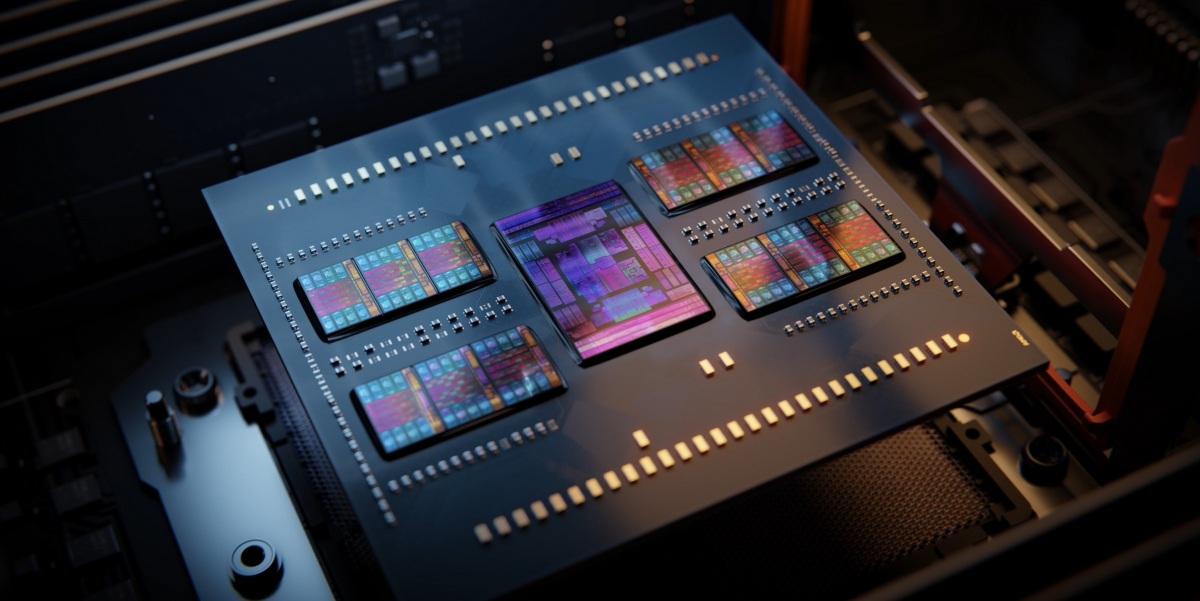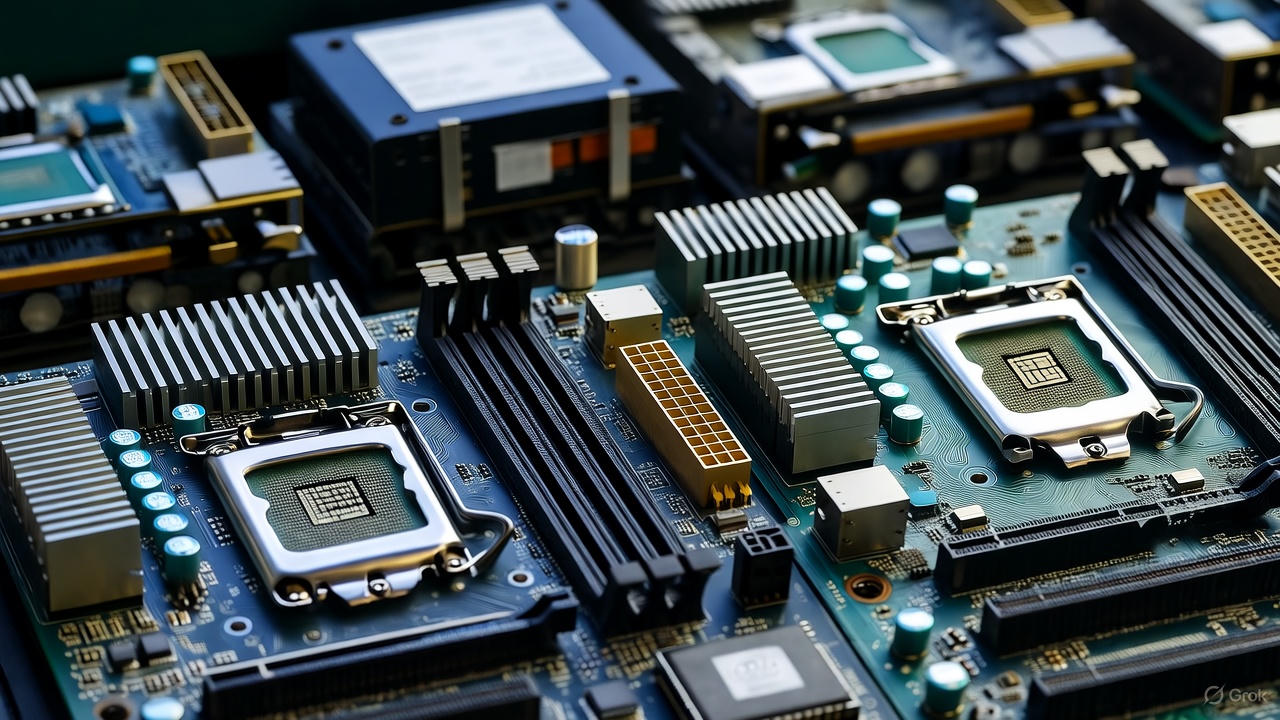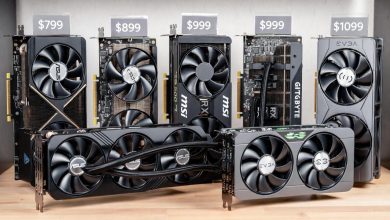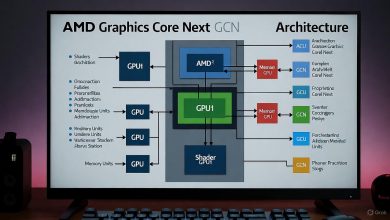Drawing from authoritative sources like PCI-SIG, AMD announcements, and industry analyses, this article provides reliable, up-to-date insights as of October 30, 2025. Whether you’re a PC builder, gamer, or tech enthusiast, understanding PCIe 6.0’s integration into motherboards will help you plan future upgrades. We’ll cover the basics, timelines, features, models, challenges, and practical advice to position your build for next-gen performance.
Introduction: Why PCIe 6.0 Matters for Motherboards
PCI Express (PCIe) 6.0 represents a massive leap in interconnect technology, doubling the bandwidth of PCIe 5.0 to an astounding 64 gigatransfers per second (GT/s) per lane. For motherboards, this means faster data transfer between components like CPUs, GPUs, SSDs, and network cards—essential for handling AI workloads, 8K video editing, and ultra-high-speed storage. Imagine loading massive game worlds in seconds or training machine learning models without bottlenecks; that’s the promise of PCIe 6.0.
The standard was finalized by PCI-SIG in January 2022, but real-world adoption has been gradual. Motherboards serve as the backbone, routing these high-speed signals, so their design must evolve to support shorter trace lengths and advanced signaling. While enterprise servers will lead the charge, consumer PCIe 6.0 motherboards are eyeing a 2026 debut, driven by AMD’s upcoming EPYC processors. This shift could redefine high-end PC builds, but it’s not without hurdles.

AMD demos full-speed PCIe 6.0 with its next-gen server CPUs – OC3D
Current Status: From 2022 Spec to 2025 Prototypes
The PCIe 6.0 journey began with its specification release in 2022, targeting a 12-18 month timeline for initial products. Fast-forward to 2025, and we’re seeing tangible progress. At Computex 2025, Micron demoed a PCIe 6.0 x4 SSD prototype hitting 30.25 GB/s sequential reads and writes—over twice the speed of top PCIe 5.0 drives. Samsung also announced plans for a 256 TB PCIe 6.0 SSD in 2026, aimed at enterprise.
For motherboards, the ecosystem is ramping up. AMD demonstrated full-speed PCIe 6.0 with its next-gen EPYC server CPUs at events in mid-2025, confirming 2026 launches for enterprise platforms. PCI-SIG’s integrator list for certified devices is slated for late 2025, paving the way for broader adoption. However, consumer motherboards lag behind, with prototypes limited to server demos. Intel and AMD roadmaps suggest consumer PCIe 6.0 integration could align with Zen 6 or Arrow Lake refreshes in late 2026 or early 2027.
Here’s a quick timeline table for clarity:
| Year | Milestone | Implications for Motherboards |
|---|---|---|
| 2022 | Spec Finalized | Foundation for design standards. |
| 2025 | Prototypes & Demos (e.g., Computex SSDs) | Early server motherboard testing begins. |
| 2026 | Enterprise Launches (AMD EPYC) | First PCIe 6.0-compatible server boards hit market. |
| 2027+ | Consumer Rollout | Desktop motherboards with full PCIe 6.0 slots become available. |
This phased approach ensures reliability, but it means enthusiasts might wait longer for affordable options.
Key Features: PAM4 Signaling, Compatibility, and Performance Benefits
PCIe 6.0 introduces Pulse Amplitude Modulation with 4 levels (PAM4), replacing the non-return-to-zero (NRZ) of previous generations. This allows twice the data per clock cycle, enabling 128 GB/s bandwidth on an x16 slot—perfect for next-gen GPUs like Nvidia’s Blackwell or AMD’s RDNA 4. Motherboards will benefit from forward error correction (FEC) and cyclic redundancy check (CRC) for error-free high-speed transfers.
Backward compatibility is a highlight: PCIe 6.0 slots will work with older cards (e.g., PCIe 5.0 GPUs at reduced speeds), and vice versa. For users, this means seamless upgrades. Performance-wise, expect SSDs reaching 32 GB/s on x4 lanes, revolutionizing load times in games and data centers. In AI and enterprise, it supports massive datasets, but for gamers, it’s overkill until 8K textures or VR become mainstream.
Experimental Micron PCIe 6.0 SSD hits a massive 30.25 GB/s, but …
Expected Models: AMD and Intel Integrations
AMD leads with its EPYC “Turin” CPUs, set for 2026, offering PCIe 6.0 lanes for servers. Expect motherboards from Supermicro or Dell with SP5 sockets supporting up to 128 PCIe 6.0 lanes. For consumers, AMD’s Zen 6 (expected late 2026) could bring PCIe 6.0 to AM5 or a new socket, potentially in X870-series boards from ASUS or MSI.
Intel’s response might come with Xeon 6 or Arrow Lake-S refreshes, integrating PCIe 6.0 in Z890 chipsets. Early models could include enterprise-focused boards like the ASUS ProArt X870E, with multiple x16 slots for GPUs and storage. Consumer variants might debut at CES 2026, priced 20-30% higher than PCIe 5.0 equivalents due to advanced PCBs.
Samsung and Micron’s SSDs will pair perfectly, but full ecosystem readiness (e.g., PCIe 6.0 GPUs) is projected for 2027.
Challenges: Cost, Power Needs, and Potential Delays
Despite the hype, PCIe 6.0 faces significant barriers. Signal integrity drops dramatically at 64 GT/s, limiting trace lengths to about 3.4 inches—challenging for standard ATX motherboards. This requires more PCB layers, premium materials, and retimers, inflating costs by 50% or more.
Power consumption rises too, with PCIe 6.0 SSDs potentially drawing 25W or more. For consumers, adoption is delayed to 2030 for SSDs, as PCIe 5.0 suffices for most tasks. Heat management and compatibility testing could push consumer motherboards to 2027, especially if supply chain issues persist.
Conclusion: Buying Advice for Upgrades
PCIe 6.0 motherboards in 2026 will usher in an era of unprecedented speed, starting with enterprise and trickling to consumers by 2027. If you’re building now, stick with PCIe 5.0 boards like AMD’s X870 or Intel’s Z790—they offer ample performance for current GPUs and SSDs. Watch CES 2026 for announcements, and consider future-proofing with modular designs.
As an expert, I recommend monitoring PCI-SIG updates and AMD/Intel roadmaps for the latest. This technology will transform computing, but patience is key. For more on PCIe evolution, check our related guides on SSD upgrades and GPU compatibility.





